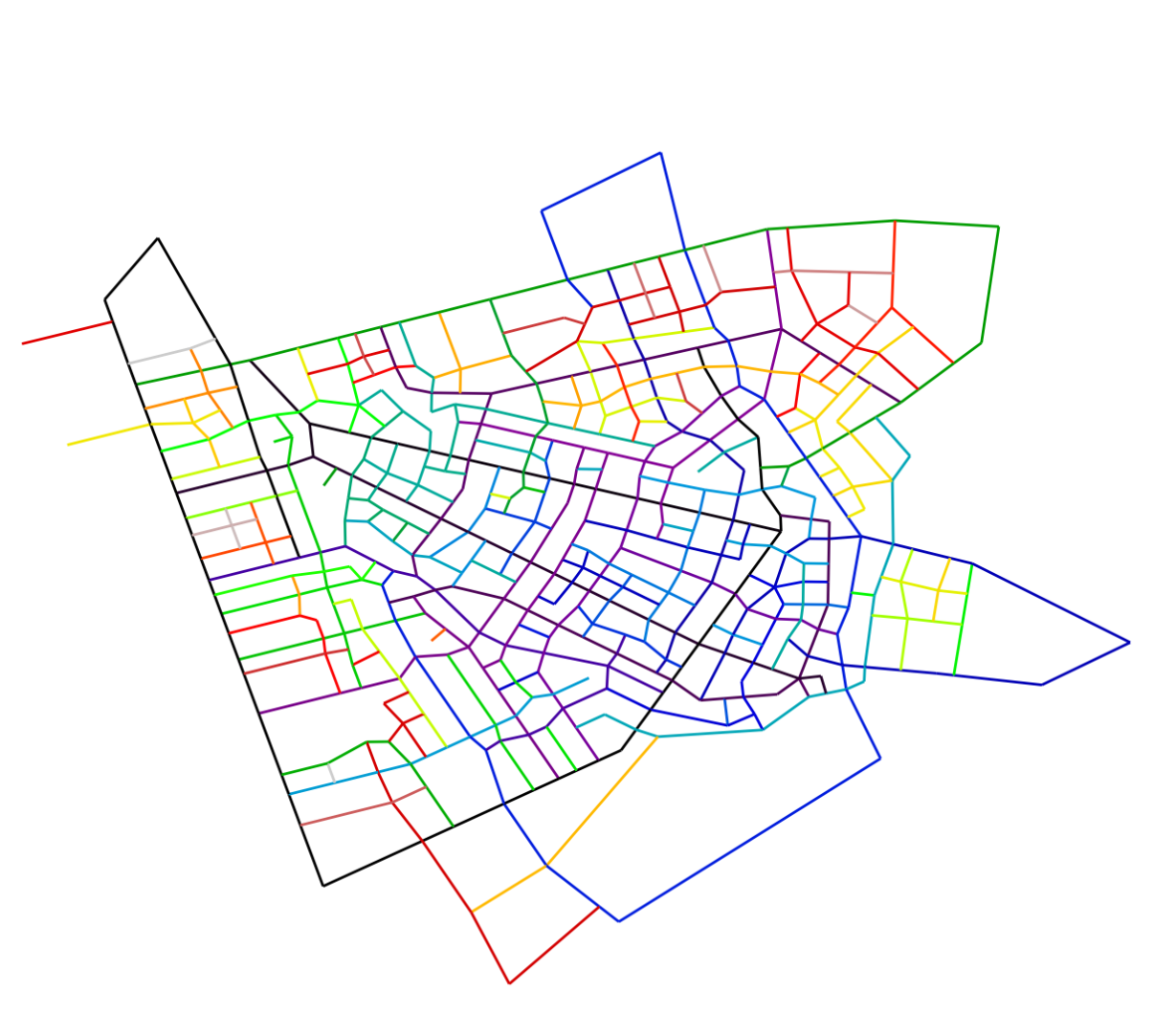Evolution of road networks
Simulating and understanding the topology of road networks

This project is joint work with Claire Lagesse, Hanae El Gouj, Liubov Tupikina and Lars Päsler. Marie-Sophie Graftiaux and Shuo Ye have contributed in the past.
During the 2020 Winter Workshop on Complex Systems, I joined a team with Claire Lagesse and Liubov Tupikina to work on a multidisciplinary project about the evolution of road networks inspired by Claire’s work on the COVADEO project. During the Winter Workshop on Complex Systems participants are encouraged to work on multi-disciplinary projects, and we felt there are very interesting opportunities to explore the intersection between geographical computer science, network science and transportation science.
We started investigating a simulation procedure for the growth of a road network, as well as the application of network measures on historical time series of road networks. We were joined by Hanae El Gouj who is working on her PhD research with Claire. Marie-Sophie Graftiaux and Shuo Ye both wrote a thesis were they combined the simulation of city growth with classical transportation optimization procedures from an operations research context.
A lot of research in transportation and operations research focuses on a particular road network bound to data provided by a company, or specifically curated benchmark datasets developed for the purpose of developing better and faster algorithms. However, if we want to understand whether and the topology of the urban environment influences what approaches to passenger transportation and last-mile delivery are most suitable, both approaches are not sufficient. My vision is that having ways to generate different types of road networks creates the opportunity to gain deeper insight into this relation.
Research Output
- Hanae El Gouj, Paul Bouman, Liubov Tupikina, Claire Lagesse. Road network characterization to understand city evolution (2021, Conference Abstract)
- Marie-Sophie Graftiaux. The Impact of Structure and Growth Parameters on Street Networks Efficiency (2021, MSc thesis supervised by me)
- Shuo Ye. Urban Morphology and Transport: An analysis on geometric measures and performance of Vehicle Routing Problems. (2021, MSc thesis supervised by me)